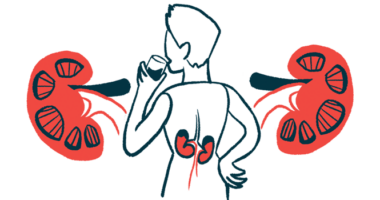Facial palsy a risk factor for hearing loss in GPA: Study
Older age, ear or eye involvement also played role in hearing impairment

Facial palsy, or weakness of the facial muscles, is associated with a nearly 10 times higher risk of hearing loss with granulomatosis with polyangiitis (GPA), a type of ANCA-associated vasculitis (AAV), a single-center study suggests.
Older age, along with ear or eye involvement, were also significant risk factors for hearing loss among the patients studied.
“Early recognition and management of hearing impairment in GPA patients are crucial for preserving auditory function and improving outcomes,” the study’s researchers wrote. The study, “Exploration of risk factors affecting hearing loss in patients with granulomatosis with polyangiitis: A single-center retrospective study,” was published in the American Journal of Otolaryngology.
A type of AAV, GPA refers to a group of autoimmune diseases marked by small blood vessel inflammation that’s most often caused by self-reactive antibodies called ANCAs. Up to 90% of people with GPA will test positive for ANCAs against the PR3 protein.
Sites of inflammation in GPA are marked by the formation of clumps of immune cells called granulomas. While its symptoms can affect various tissues, most people with GPA usually have a classic triad of lung, kidney, and ear, nose, and throat (ENT) involvement.
A recent study suggests that nearly all people with GPA have hearing-related symptoms, including hearing loss, tinnitus, or ringing in the ears, and a feeling of fullness (pressure) in the ears. Ear involvement is the first and only GPA manifestation in some cases.
“GPA patients with ENT disease may have a negative impact on quality of life and can lead to permanent damage,” wrote researchers in China who explored the risk factors for the occurrence of different degrees and types of hearing loss with GPA “to provide value for early diagnosis, restoration of hearing and improvement in prognosis.” The researchers retrospectively analyzed data from 108 people with GPA, ages 12-82, who were seen at the researchers’ hospital from 2013 to 2023. Half (50.93%) were women.
Studying hearing loss in GPA
Based on a hearing exam, 89 (82.41%) had hearing loss. A control group was made up of 19 (17.59%) patients who had normal hearing.
Ear, nose, and lung involvement were the most common clinical manifestations, affecting more than half the patients. Moreover, ear involvement and hearing loss were the first GPA symptoms experienced by 32 (29.63%) and 14 (12.96%) patients, respectively.
Nearly all the patients were treated with glucocorticoids and traditional immunosuppressants. A few received rituximab, an antibody-based immunosuppressive therapy sold as Rituxan in the U.S., Canada, and Japan, and as MabThera elsewhere.
Patients with ear involvement were about six times more likely to experience worsening hearing loss than those without it. Those developing facial palsy had a nearly five times higher chance of hearing loss, while those with eye involvement had a chance about twice as higher.
Hypertrophic pachymeningitis (HP), or inflammation and thickening of the outer membrane surrounding the brain and spinal cord, was reported only in the hearing loss group. This complication was more frequent among those with severe hearing loss (30.77%).
Lastly, there was a link between the use of rituximab and the degree of hearing loss, with the therapy appearing to be a protective factor.
The positivity rate for anti-PR3 ANCAs tended to decrease with increasing hearing impairment, while the positivity rate for a different type of ANCAs, called perinuclear ANCAs, increased with worsening hearing.
Connection between hearing loss, facial palsy
Additional statistical analyses to identify risk factors for hearing loss with GPA after adjusting for age, ANCA type, ear involvement, eye involvement, HP, facial palsy, and rituximab use showed that older age, ear involvement, eye involvement, and facial palsy were each significantly associated. In particular, the risk of hearing loss was increased by four times in those with eye involvement, by nearly five times among those with ear involvement, and, with facial palsy, by nearly 10 times.
Facial palsy was “the factor that poses the greatest risk of exacerbating hearing loss,” wrote the researchers, who suggested that inflammation and blockages of the blood vessels that supply the facial nerve, which passes near the inner ear, or granuloma-related lesions compressing the facial nerve, may explain the connection. This means that the same inflammatory process that affects the facial nerve may lead to more severe hearing loss.
Regarding different types of hearing impairment, mild to moderate hearing loss was more common in those with conductive hearing loss, which occurs when sound can’t reach the inner ear due to infection, blockages, or trauma. More severe or profound hearing loss was seen among patients with sensorineural hearing loss, or damage to the inner ear, and in those with a mix of both conductive and sensorineural hearing loss.
“This research identified age, ear involvement, eye involvement, and facial palsy as risk factors linked to permanent hearing impairment in individuals with GPA,” the researchers wrote. “Early recognition and management of hearing impairment in these patients are crucial for preserving auditory function and improving overall outcomes.”






